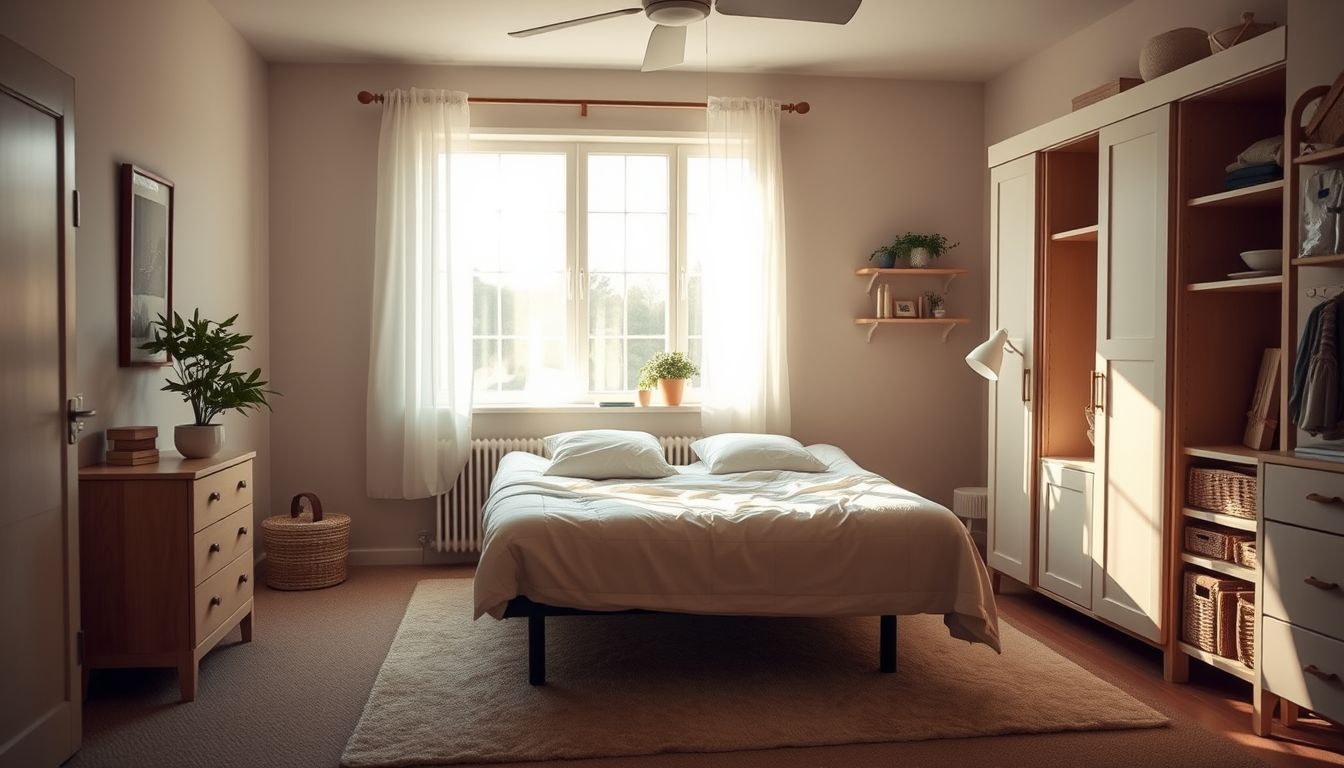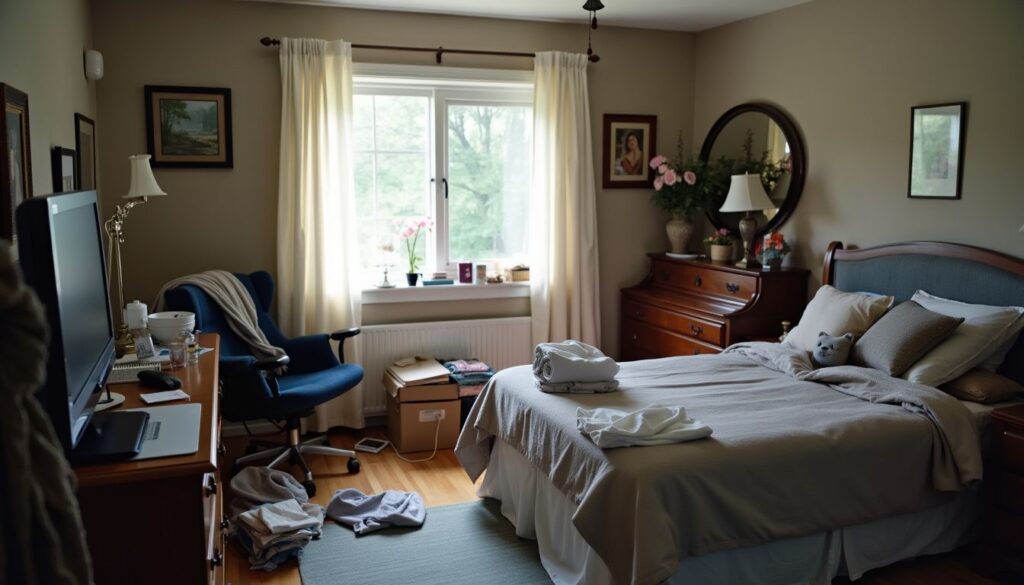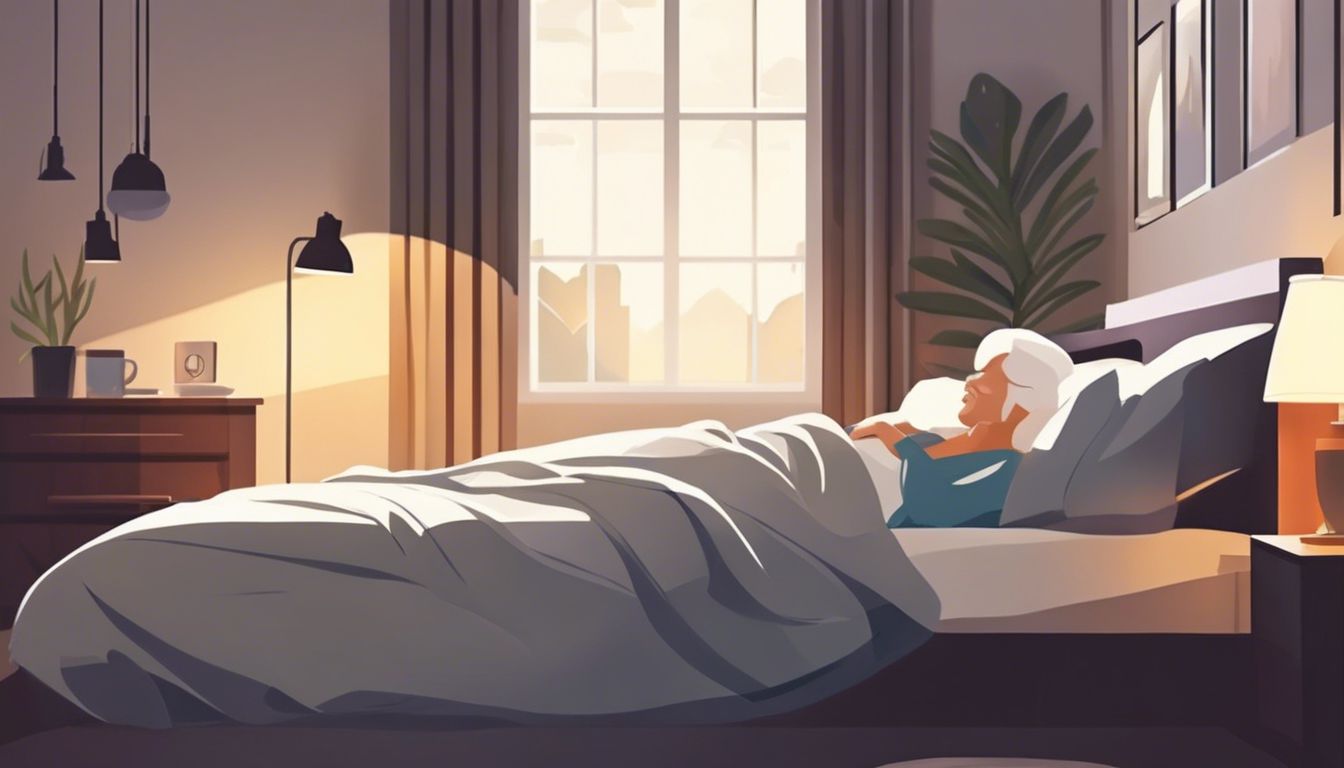Caregivers often face a tough time making their bedrooms work well for them. A good room setup is key for anyone taking care of elders in places like nursing homes or at home. This article will show ways to change a caregiver’s bedroom into a more useful space.
Keep reading to learn how.
Key Takeaways
- Adjustable beds with railings make sleeping safer for elders and help caregivers in their tasks.
- Wall shelves and under-bed drawers keep things organized without taking up floor space.
- Smart lighting can be changed easily to suit the time of day or task, making the room safe and comfortable.
- Voice-controlled devices let caregivers use lights or call for help hands-free, adding safety and ease at night.
- Having a phone with big buttons next to the bed makes it easy to call for help when needed.
Essential Furniture for a Caregiver’s Bedroom

A caregiver’s bedroom needs furniture that brings ease and calm. An adjustable sleeping surface offers comfort, while clever storage helps keep things tidy and within reach.
Adjustable Bed for Comfort and Flexibility
Adjustable beds are key for a caregiver’s bedroom. They make sure the person in bed is safe and comfy. With heights from 25 to 36 inches, these beds fit well for elder care. Bed railings add extra safety, stopping falls.
Plus, they help seniors who spend much time in bed, especially when eating or resting.
Next up, let’s talk about storing things smartly to use space best.
Efficient Storage Solutions to Maximize Space
Wall shelves and under-bed drawers are key. They save lots of room. Place often-used items on lower shelves. Keep less-needed things higher up or in the drawers. This way, everything has a spot and the floor stays clear.
Choose furniture with built-in storage. Think about beds with deep drawers or closets with extra racks inside. This helps keep clothes and personal items organized without taking up more space.
It’s all about smart choices to make caregiving easier and safer.
Implementing Technology for Ease and Efficiency
Adding tech makes life easier in a caregiver’s bedroom. Think smart bulbs for better light and voice-activated helpers for quick tasks.
Smart Lighting Systems for Adjustable Illumination
Smart lighting systems change how caregivers work, especially at night. These systems let them adjust light levels easily. This means rooms can be brighter during care activities and softer to keep patients comfortable later.
With touch-activated lamps and motion sensors, safety goes up because the path is always lit without touching a switch.
Smart lighting takes care out of the dark – into safety and comfort.
Multiple windows in a room also help by adding more natural light during the day. This mix of high-tech lights and daylight cuts down on electricity use, saving money over time. Caregivers find these smart adjustments helpful for staying alert while keeping their charges safe and peaceful.
Installation of Voice-Controlled Devices
Putting in voice-activated gadgets helps a lot. Caregivers can turn on lights or set alarms without touching anything. Just by speaking, they control devices. This means more safety and ease for them, especially at night.
Also, having an easy-to-use phone with big buttons next to the bed is smart. It makes calling for help simple if needed. These tech tools make every day smoother for those taking care of others in health care places like dementia care homes.
Conclusion
Making a caregiver’s bedroom work better is sure. Start with an adjustable bed and smart storage for more space. Add smart lights and voice devices for easy control. These steps make the room safe, comfy, and handy for both rest and care needs.
Caregivers can then do their best job without stress.
FAQs
1. What are some ways to make a caregiver’s bedroom more functional?
To make a caregiver’s bedroom more functional, consider interior design that caters to their needs. This could include casegoods for storage, an adjustable bed base for comfort and possibly installing a stair lift if the room is upstairs.
2. How can I fund these changes?
You might take out a personal loan or use credit to cover these expenses. If you receive a lump sum payment, this could also be used towards making the room more functional for healthcare workers such as doctors or physicians.
3. Are any of these expenses tax deductible?
In certain cases, modifications made for healthcare purposes may be tax deductible. Always consult with your tax advisor before assuming anything is deductible.
4. Can wheelchair accessibility be considered in the design?
Absolutely! Whether your caregiver uses a wheelchair or not, it’s always good to think about future possibilities when planning interior design changes.
5. Besides functionality, how can I personalize the room?
Consider adding personal touches like photo albums or decor that reflect their personality – whether they’re an extrovert who loves bright colors or someone celebrating a centennial birthday! Remember though – always respect copyright laws if using others’ work.









